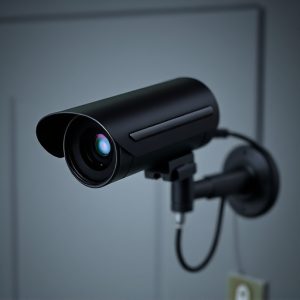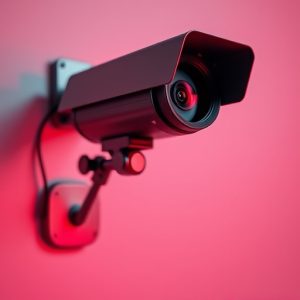Spy Cameras and Microphones: Unseen Sentinels in Today’s Audio Surveillance Landscape
Recent advancements in spy camera and microphone technology have significantly enhanced their capab…….
Recent advancements in spy camera and microphone technology have significantly enhanced their capabilities, allowing for high-quality audio and video surveillance in a variety of settings with increased stealth. These devices are designed to be inconspicuous and can record activities or conversations discreetly, even in low-light conditions. With directional microphones and noise-cancellation features, they capture clear audio from afar, even in noisy environments. The integration of artificial intelligence enables autonomous activation based on predetermined triggers or specific content detection, enhancing security and opening up diverse applications across different fields. This technology raises concerns about privacy as it can be used for unauthorized surveillance. As these devices become more accessible and affordable, the need for counter-surveillance measures and a balance between security and privacy becomes increasingly critical. The legal landscape surrounding their use is complex, with strict regulations like the Federal Wiretap Act and Electronic Communications Privacy Act governing permissible practices. Ethically, there's a pressing need for transparent policies and safeguards to protect privacy rights and ensure data security, emphasizing the importance of responsible use in maintaining public trust.
In an era where privacy is increasingly elusive, the integration of spy camera and microphone technology has ushered in a new chapter in surveillance audio. This article delves into the unseen yet omnipresent world of audio monitoring, exploring its technological advancements, implications, and legal boundaries. From the miniature lenses that capture visual cues to the minuscule microphones that record conversations with crystal clarity, “Surveillance Audio” illuminates how these tools are becoming more sophisticated, often outpacing our understanding of their reach and impact. Join us as we dissect the anatomy of spy camera and microphone systems, and consider the broader legal and ethical landscapes they navigate.
Unveiling the Invisibility Cloak: The Rise of Spy Camera Technology
The advent of miniaturized electronics has significantly advanced the capabilities of spy cameras and microphones, rendering them capable of unobtrusively capturing high-quality audio and video in a multitude of environments. These devices, often no larger than common household items, can be inconspicuously placed within an environment to monitor activities or conversations without drawing attention. The technology behind these spy cameras has evolved to the point where they can record in near-total darkness, utilizing advanced low-light sensors, and their microphones are equally adept at picking up clear audio even from a distance, thanks to directional and noise-cancellation features that filter out ambient sounds.
The integration of artificial intelligence into spy camera technology has further revolutionized the field. AI algorithms enable these devices to detect specific triggers or scenarios, such as unusual movements or certain spoken keywords, thereby activating recording functions autonomously. This level of sophistication not only enhances their utility for security purposes but also expands their applications in various sectors, from covert operations to ensuring workplace safety and efficiency. The implications of this technology are vast, as it can be used both ethically and discreetly to gather data, enhance surveillance, and provide valuable insights where traditional monitoring might fail.
Microscopic Eavesdroppers: How Spy Microphones Are Changing the Game
In recent years, the field of surveillance has seen a significant evolution with the advent of highly sophisticated spy cameras and microphones. These devices, often undetectable to the untrained eye, are transforming the landscape of covert intelligence gathering and personal privacy concerns. The miniaturization of technology has enabled the creation of tiny, yet powerful, audio recording devices capable of capturing crystal-clear sound from distances that were once beyond reach. These eavesdropping tools can be integrated into everyday objects, from what appears to be an innocuous smoke detector to a seemingly ordinary digital picture frame, making them virtually invisible in public and private spaces. The implications are far-reaching; individuals and organizations alike must now consider the potential for unauthorized audio surveillance, as these devices can be used for everything from corporate espionage to personal snooping.
The integration of spy cameras with microphones is a testament to the ingenuity of modern surveillance technology. These dual-function devices not only record sound but can also transmit visual and auditory information in real-time, providing a comprehensive monitoring solution that can be remotely accessed. The advancements in audio processing and data encryption have also led to improved sound quality and secure transmission methods, ensuring that the intelligence collected remains uncompromised. As these devices become more accessible and affordable, it’s imperative for individuals and entities to employ counter-surveillance measures and to be aware of the potential risks associated with acoustic privacy breaches. The balance between security and surveillance is a delicate one, and as spy camera and microphone technology continues to evolve, staying informed about these developments is key to safeguarding sensitive information in an increasingly interconnected world.
The Anatomy of a Spy Camera and Microphone System
Surveillance audio systems are composed of sophisticated equipment designed to capture clear, covert audio in various environments. A spy camera and microphone system typically integrate miniature microphones that are engineered to produce high-fidelity sound despite their small size. These microphones are often concealed within or alongside spy cameras, which can be disguised as everyday objects such as clocks, smoke detectors, or even within toys. The microphones’ sensitivity and directionality are tailored to the specific use case, ensuring they pick up targeted sounds while filtering out ambient noise. This anatomy of a spy camera and microphone system is crucial for maintaining the device’s stealthy nature, as the visual inconspicuity is just as important as the audio quality in achieving successful surveillance. The cameras themselves are equipped with high-resolution lenses and may also feature night vision capabilities, allowing for continuous monitoring in any lighting condition. The integration of these components results in a formidable tool for capturing surveillance audio, which can be crucial for security, investigative purposes, or personal safety.
Legal Considerations and Ethical Implications of Surveillance Audio Equipment
The deployment of surveillance audio equipment, featuring hidden spy cameras and microphones, raises significant legal considerations and ethical implications that must be carefully navigated by users and policymakers alike. Legally, the use of such devices is governed by a patchwork of state and federal laws in many jurisdictions. These laws dictate where and how surveillance audio equipment can be installed and monitored to ensure privacy rights are upheld. For instance, laws like the Federal Wiretap Act and Electronic Communications Privacy Act set clear boundaries for intercepting communications, providing a legal framework for what is permissible in terms of recording conversations without consent. Users must be acutely aware that illegal surveillance can lead to severe penalties, including fines and imprisonment.
Ethically, the use of spy cameras and microphones in surveillance raises concerns about consent and the right to privacy. It is imperative to consider the context in which these devices are used; for example, in a workplace to monitor employee productivity may be ethically justifiable, but using the same equipment to secretly record private conversations in a home or other personal spaces would raise serious ethical red flags. The ethical deployment of surveillance audio requires transparent policies about recording and data handling, ensuring that individuals’ expectations of privacy are respected. Moreover, the potential for abuse and misuse of such technology must be addressed through robust oversight mechanisms and clear guidelines to prevent invasions of privacy and protect sensitive information from falling into the wrong hands.


